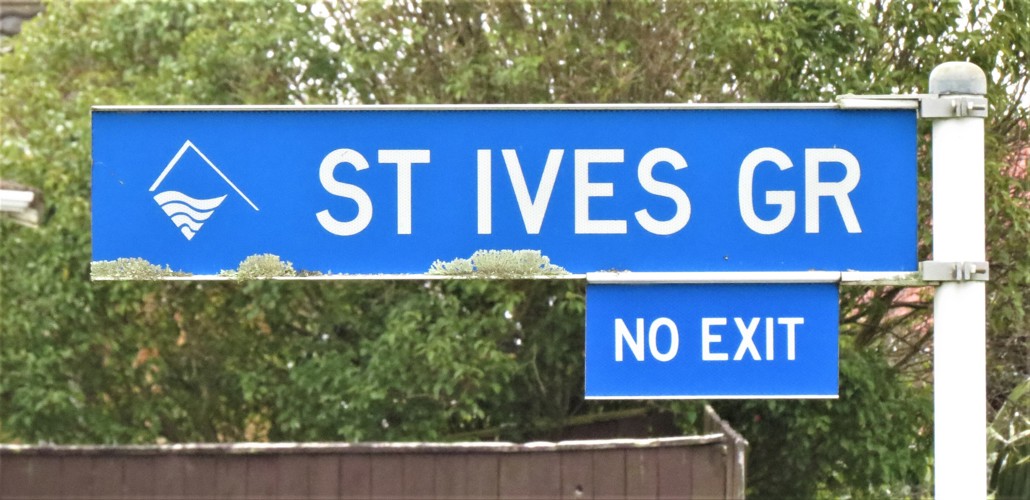 St Ives Grove sign (2020). Rachel Sonius. Word on the street image collection.
St Ives Grove sign (2020). Rachel Sonius. Word on the street image collection.
 St Ives Grove sign (2020). Rachel Sonius. Word on the street image collection.
St Ives Grove sign (2020). Rachel Sonius. Word on the street image collection.
St Ives Grove is part of a subdivision in Whalers Gate created in 1973. The name was chosen from a list of options authorised by the old Taranaki County Council, many of which were taken from around the original Plymouth.
These southwest English counties are where many of New Plymouth’s first European settlers came from but perhaps it was also thought that a pretty seaside town in Cornwall was the perfect inspiration for a street in a city by the sea on the other side of the world.
St Ives is situated north of Penzance, on the coast of the Celtic Sea. Legend has it that the town was named after Irish saint Ia, who sailed over on a magical giant leaf. She angered the pagan King of Cornwall by trying to introduce Christianity to the local people so he had her to put to death, and the town is said to have grown up around the site of her grave.
Another theory is that the origins of this patron saint stretch all the way to Byzantium. The cult of the venerated female Saint Ia of Persia may have been introduced into Cornwall in the sixth century via trade links. Imported pottery and coins have been found at a range of archaeological sites, evidence of the region’s once-strong ties to the eastern Mediterranean.
St Ives had been an important fishing port since medieval times but the modern resort didn’t develop until construction of part of the Great Western Railway in 1877 brought Victorian holidaymakers to the Cornish coast – famous artists including J.M.W. Turner and Henry Moore were also attracted to the area for its bright sunlight.
The historic fishermen’s quarter, knows as the Downalong, is the oldest residential area of St Ives and known for its colourfully named cobbled streets, including Teetotal Street, Salubrious Place and Virgin Street.
Please do not reproduce these images without permission from Puke Ariki.
Contact us for more information or you can order images online here.